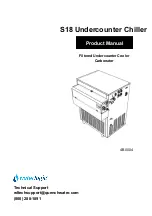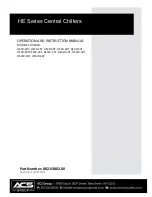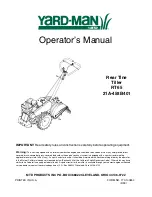
16
ENGLISH
GB
Limit the number of times and the duration of time
the doors are opened.
!
Blast chilling data refer to standard products
(low fat content) with a thickness below 50 mm;
therefore avoid overlaying products or the
insertion of pieces with a much higher thickness.
This would, in fact, lead to an extension of blast
chilling times. Always distribute the product well
on the trays or basins or in the case of thick
pieces decrease the amount to blast chill.
After blast chilling/shock freezing the
product, it can be stored in a preservation cabinet
after having been duly protected. A tag should be
applied describing the contents of the product,
blast chilling/shock freezing date and expiry date.
When the product has been blast chilled it must
be preserved at a constant temperature of +2°C ,
while if it has been shock frozen it must be
preserved at a constant temperature of -20°C.
The chiller should be used for storage for
short periods only.
!
To prevent bacterial contamination or
contamination of any other biological nature,
the needle probe must be disinfected after
use.
!
To extract the product that has undergone
blast chilling or shock freezing, always wear
gloves to protect the hands, as "burns" may occur
from the cold.
Blast chilling Cycle
With this operating modality the chiller keeps the
temperature of the refrigerating compartment
close to zero during the entire chilling process in
order to ensure a gradual drop in the temperature
of the product to +3°C. In this way, ice crystals do
not form on the surface of the product. This blast
chilling method should be used preferably for
products that are not packed and whose
physical/organoleptic characteristics could be
damaged by the formation of superficial ice (e.g.
fish).
Shock freezing Cycle
With this blast chilling modality the blast chiller
maintains the temperature at a negative value
below -18°C which is the end temperature of
shock freezing. For shock freezing to be
successful and fast, food should be in small
pieces, especially if it has a high fat content. The
largest pieces should be placed in central trays. If
it takes longer than standard time to shock freeze
and the sizes cannot be reduced, decrease the
quantity and precool the chiller compartment by
starting an empty shock freezing cycle before
shock freezing the product.
6. CLEANING
AND
MAINTENANCE
6.1.
Recommendations for Cleaning and Maintenance
!
Activate all envisioned safety devices before
carrying out any maintenance interventions. In
particular, deactivate the electrical power supply
using the automatic isolating switch.
6.2. Routine
Maintenance
Routine maintenance consists of daily cleaning of
all the parts which can come into contact with
foodstuffs and the periodic maintenance of the
burners, nozzles and draining pipes.
Correct maintenance allows the user to maximise
performance levels and operating life and
constantly maintain safety requirements.










































